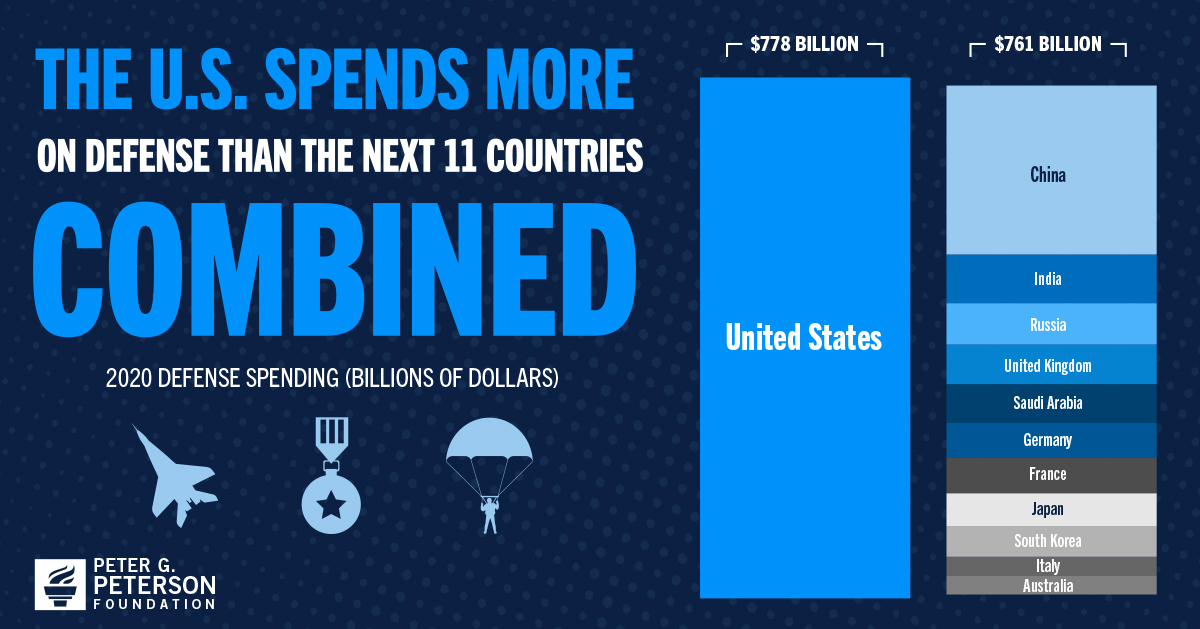
Do We Value Anything Else
As Much as Military Spending?
David Swanson / World BEYOND War
(January 25, 2024) — The 2020 Democratic Party Platform said that Democrats would reduce military spending: “We can maintain a strong defense and protect our safety and security for less.” Right on! Get out the vote!
Then a Democratic president proposed an increase each of the next three years, just as his Republic predecessor had done each year. And Congress not only went along but went over and above the proposed increases, with more bipartisan harmony than we are usually led to believe exists.
Congress is having a remarkably difficult time deciding whether to put an extra $100 billion or so into more weapons for Ukraine, Israel, Taiwan, and the border of Mexico, with various groups of Congress Members opposing one or another of those expenditures, and the combining of them failing thus far to win passage.
But the military spending Congress does agree on year after year is so vast as to be beyond easy visualization or comprehension. The US government spends well over $1 trillion each year on its military. A 2019 article from a Quincy Institute author at TomDispatch identifies costs of $1.25 trillion. This includes the annual Pentagon base budget, plus war budget, plus nuclear weapons in the Department of Energy, plus the Department of Homeland Security, and other military spending.
Military spending is over half of federal discretionary spending — the money Congress decides how to spend each year (so, not including spending mandated over many years, such as much of Social Security or Medicare). And yet it is extremely rare for a candidate for Congress to have any position at all on military spending or the general outline of the federal budget, and even rarer for a media outlet to ask them for one.
One reason this is odd is that a tiny fraction of military spending, if diverted elsewhere, could radically transform just about any of the policy areas that candidates do have positions on.

My organization, World BEYOND War, has put up six billboards in Berkeley and Oakland that each say in big black letters on a yellow background “3% of US Military Spending Could End Starvation on Earth.”
The 3% figure comes from dividing what the United Nations says it would cost to end starvation globally by what the US government spends on its military each year.
In 2008, the United Nations said that $30 billion per year could end starvation on Earth. The Food and Agriculture Organization of the United Nations tells us that number is still up to date.
This does not factor in the dramatic increase in the past few months of people facing starvation, 80% of whom worldwide are now in Gaza. But clearly the most important first step to help them would be to cease putting billion of dollars into weapons for the war.
Starvation is not the only thing you could address with $30 billion a year (or $600 billion over the past 20 years). For $30 billion a year, you could hire 33 thousand teachers at $90,000 each, or provide 3 million units of public housing at $10,000 each, or provide 60 million households with wind power at $500 each. Can you imagine if we valued education or housing or the sustainability of life on Earth that much?

Those alternatives would not only benefit huge numbers of people directly. They would also have greater positive economic impact than military spending does. Far from being the jobs program often claimed, military spending produces fewer jobs than other public spending, and fewer jobs than never taxing the money from working people at all. It may sound grotesquely sociopathic to defend war as a jobs progam, but it’s also just plain false, as military spending actually eliminates jobs.
US military spending dwarfs the cost of most infrastructure and social needs spending legislation, the cost of any other item (or dozen items) of federal discretionary spending, and the military spending of any other nation. Of 230 other countries, the US spends more on militarism than 227 of them combined. In 2022 military spending per capita, the US government trailed only Qatar and Israel. All of the top 27 nations in per capita military spending are US weapons customers.
The US pressures other nations to spend more. Of 230 other countries, the US exports more weaponry than 228 of them combined. Much of Donald Trump’s opposition to NATO, between 2017 and 2020, amounted to badgering NATO members to spend more on militarism. (With enemies like these, who needs boosters?)

Check out these basic military spending numbers — in the year 2022 and measured in 2022 US dollars, from SIPRI (so, leaving out a huge chunk of US spending):
- Total $2,209 billion
- US $877 billion
- All countries on Earth but US, Russia, China, and India $872 billion
- NATO members $1,238 billion
- NATO “partners across the globe” $153 billion
- NATO Istanbul Cooperation Initiative $25 billion (no data from UAE)
- NATO Mediterranean Dialogue $46 billion
- NATO Partners for Peace excluding Russia and including Sweden $71 billion
- All NATO combined excluding Russia $1,533 billion
- Entire Non-NATO world including Russia (no data from North Korea) $676 billion (44% of NATO and friends)
- Russia $86 billion
- China $292 billion
- Iran $7 billion
The US public has tended for decades to be less supportive of enormous military spending than elected officials, but also to have very little grasp of how much it is or how it compares to other things. Since almost nobody can tell you what exactly a trillion dollars in military spending buys, it follows that almost nobody can tell you why $970 billion wouldn’t be just as good or better. The Pentagon, the one department that has never passed an audit, cannot answer such questions itself.
So, regardless of your belief, or lack thereof, in the wisdom of militarism in general, you are asked to take it on faith that something better than ending starvation is being done with the last little bit of the military budget. Where is our usual skepticism? We need it badly!
Listen to this topic discussed on Rising Up with Sonali, and on Flashpoints.
David Swanson is executive director of World BEYOND War. He will be in Berkeley and Oakland on January 28 for events related to six billboards put up by his organization.
Swanson is an author, activist, journalist, and radio host. He is executive director of WorldBeyondWar.org and campaign coordinator for RootsAction.org. Swanson’s books include War Is A Lie. He blogs at DavidSwanson.org and WarIsACrime.org. He hosts Talk World Radio. He is a Nobel Peace Prize nominee, and US Peace Prize recipient. Longer bio and photos and videos here. Follow him on Twitter: @davidcnswanson and FaceBook, and sign up for: Activist alerts. Articles. David Swanson news. World Beyond War news. Charlottesville news.
Related:
Raising Public Awareness of US Military Spending
Rising Up with Sonali
https://risingupwithsonali.com/raising-public-awareness-of-u-s-military-spending/